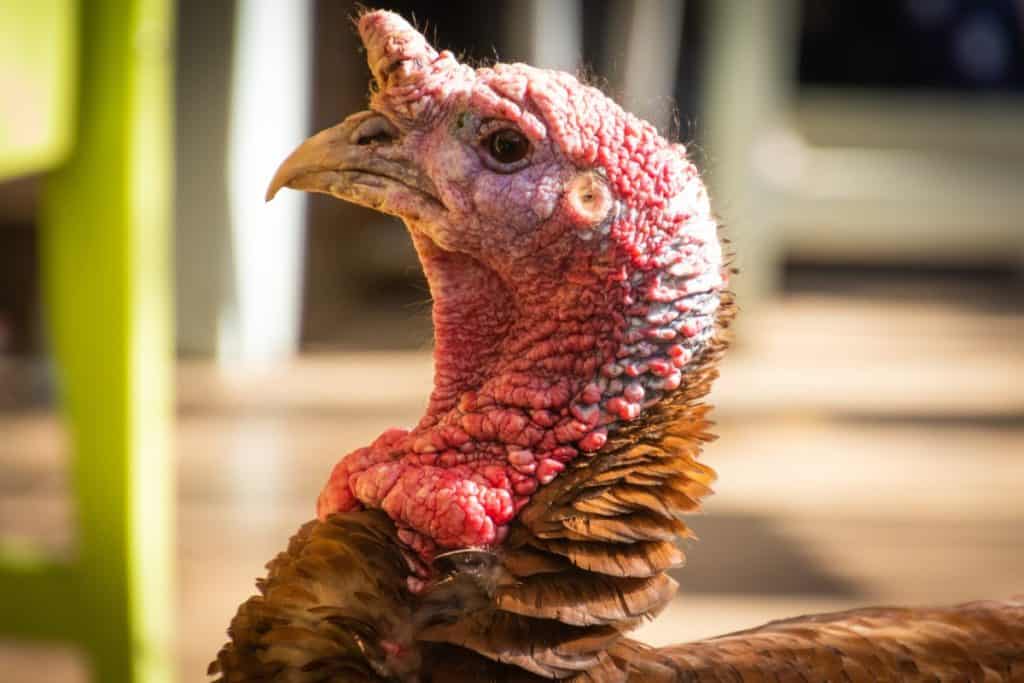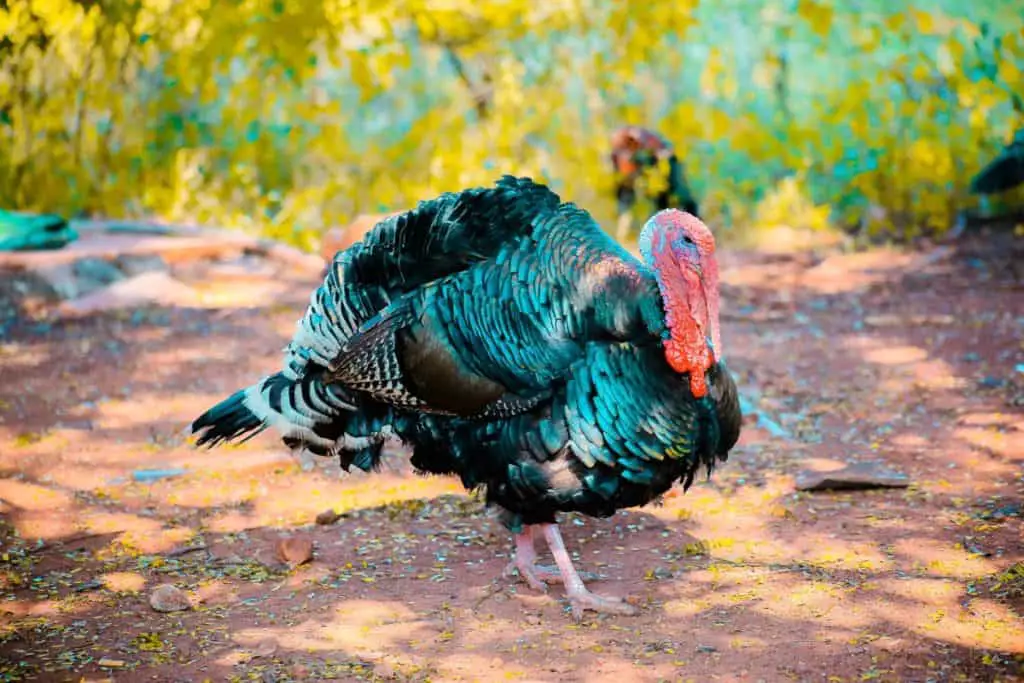
If you are interested in finding out whether a turkey is a producer, a consumer, or a decomposer then you’ve come to the right article.
As, in this article, you’ll find the exact answer to this question, and also after you’ve read the answer to the main question then I’ll cover the answers to a few more closely related questions as well to extend your knowledge further.
I hope you learn a lot from this article.
Is a turkey a producer, a consumer, or a decomposer?
Turkeys are a large species of Galliformes which is the same order that includes chickens and quail.
There are two types of turkey: the wild turkey (Meleagris gallopavo) and the ocellated turkey (Meleagris ocellata).
Both are opportunistic ground feeders.
Turkeys are consumers since they feed upon the nuts and seeds of plants, which are producers, as well as various small animals.
Producers are plants and algae that convert inorganic nutrients and sunlight into energy, and this energy then becomes available as organic matter for consumer animal species to eat and digest.
Consumers are any organisms that feed upon producers or other consumers.
Is a turkey vulture a producer, a consumer, or a decomposer?
Turkey vultures (Cathartes aura) or buzzards, as they are sometimes known are scavengers and thus consumers.
They are neither producers nor decomposers.
Although scavengers like turkey vultures feed on decaying animal protein, they are not considered decomposers.
Organisms that are classified as decomposers, such as bacteria and fungi, break down animal matter through enzyme activity before consuming it.
When turkey vultures eat animal matter, they do so through the normal process of digestion that is common to vertebrates.
Turkey vultures can find carcasses when flying because they have a keen sense of smell, which allows them to detect the gasses emitted by decaying flesh.
They also have extraordinarily good eyesight.
Check out the video below if you want to see a turkey vulture consume the meat of a dead skunk and opossum.
Is a wild turkey a producer, a consumer, or a decomposer?
Wild turkeys (Meleagris gallopavo) are consumers: they feed on nuts and the seeds of producers, or plants.
Any animal that eats a producer is considered a consumer, not a producer or decomposer.
Plants and algae are the primary producers since they convert sunlight and inorganic nutrients into organic energy that serves as the foundation of the food chain.
When animal species eat plants or algae (or other consumers, for that matter), they are considered consumers.
Decomposers, by contrast, use enzymes to break down plant or animal matter before feeding on the nutrients.
Is a turkey a primary consumer?
The two types of turkey, the wild turkey (Meleagris gallopavo) and the ocellated turkey (Meleagris ocellata) are both primary consumers since they eat nuts, berries, and seeds from plants, which are, themselves, producers.
Any animal that eats a producer or parts of a producer is considered a primary consumer.
Is a turkey vulture a primary consumer?
Animals that eat producers like plants and algae are primary consumers.
Turkey vultures (Cathartes aura) are scavengers that feed on carrion or dead animals.
They do not eat plants or plant matter, so they are not primary consumers.
Check out the video below if you want to find out why vultures don’t get sick when eating dead and rotting things.
Is a turkey a secondary consumer?
A secondary consumer is an animal that eats a primary consumer (an animal that eats plants and algae).
Turkeys are both primary consumers and secondary consumers since they eat both plants and animals.
Their diets include plant matter, such as nuts and berries, as well as small animals, such as insects, worms, and lizards.
Is a turkey vulture a secondary consumer?
Secondary consumers eat primary consumers.
Turkey vultures, or buzzards, are scavengers that feed on carrion, or dead animals.
Since these dead animals are sometimes primary consumers, turkey vultures are secondary consumers.

Is a wild turkey a secondary consumer?
A secondary consumer is either a carnivore or an omnivore.
Either way, they eat other animals, specifically primary consumers.
Wild turkeys are opportunistic omnivores and, therefore, are secondary consumers.
Although they eat nuts, seeds, and berries, they also eat insects, lizards, worms, and many more small animal species.
Is a turkey a tertiary consumer?
A tertiary consumer is a carnivore or omnivore that eats secondary consumers.
Turkeys are opportunistic omnivores and they will eat lizards, snails, and various other secondary consumers.
In that sense, they are tertiary consumers.
Is a turkey vulture a tertiary consumer?
Since turkey vultures, or buzzards, are opportunistic scavengers, they eat from the carcasses of both primary and secondary consumers.
They are thus tertiary consumers or organisms that consume secondary consumers.
Tertiary consumers, generally, have decently large bodies and this is also the case with turkey vultures.
Is a turkey a quaternary consumer?
Quaternary consumers are predators at the top of the food chain, which consume primary, secondary, and tertiary consumers.
Typically, an ecosystem can only sustain a small number of quaternary consumers, especially apex predators.
The two extant species of turkeys wild turkey (Meleagris gallopavo) and the ocellated turkey (Meleagris ocellata) are opportunistic omnivores.
However, when they eat other animals, they characteristically focus on primary or secondary consumers, such as lizards or earthworms.
Moreover, turkeys are not at the top of the chain, since they are hunted and eaten by coyotes, foxes, weasels, and various other predators.
Humans, for example, love to raise them and then eat their meat when turkeys become adults.
For these reasons, turkeys are not quaternary consumers.
Is a turkey a herbivore?
Herbivores are animals that restrict their diet to vegetation and plant matter, though they often can ingest insects and microorganisms when doing so.
Nevertheless, the bodies of herbivores require plant nutrients, not animal nutrients.
Both types of turkey the wild turkey (Meleagris gallopavo) and the ocellated turkey (Meleagris ocellata) are omnivores.
They eat a combination of nuts, berries, worms, insects, and pretty much any other small types of plant production and animals.
Since they eat and derive nutrition from both plant and animal sources turkeys are not herbivores.
Is a turkey a carnivore?
Carnivores restrict their diet to eating the meat of other animals which means that they do not characteristically seek out plant matter for nutrition.
Both wild turkeys (Meleagris gallopavo) and ocellated turkeys (Meleagris ocellata) are omnivores, not carnivores.
They need nutrients from both plant and animal matter.
In addition to nuts, seeds, and berries, turkeys eat worms, lizards, insects, and many more small animals.
Is a turkey an omnivore?
Omnivores are animals that require nutrients contained in both plants and animal meat.
Both types of turkey the wild turkey (Meleagris gallopavo) and the ocellated turkey (Meleagris ocellata) are omnivores.
They eat nuts, berries, seeds, lizards, snails, and worms, amongst many other things that fit their omnivorous diet.
